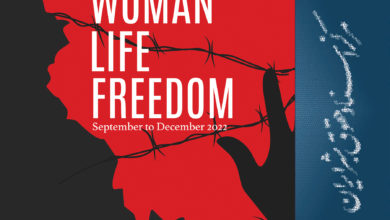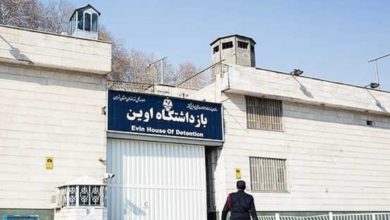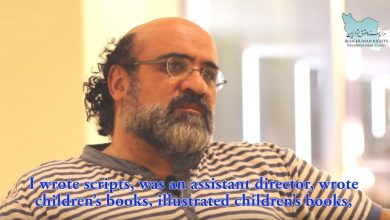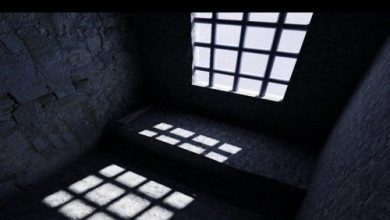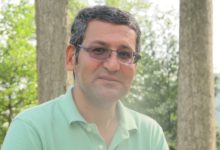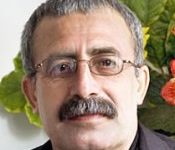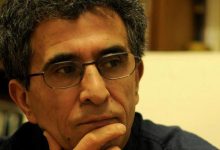Witness Testimony of Habib Farahzadi: a student activist and law graduate
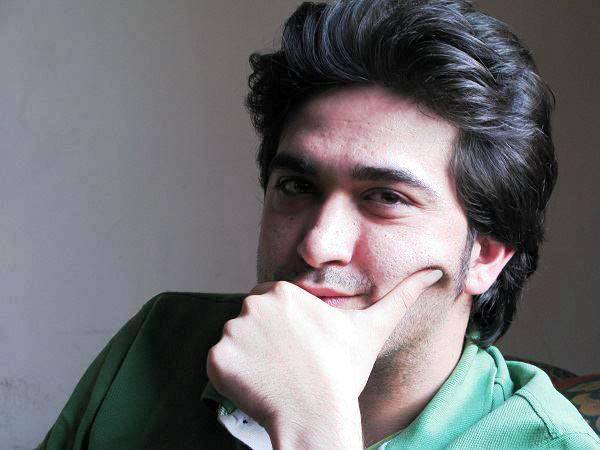 (July 3, 2013) – In this witness statement, Habib Farahzadi–a student activist and law graduate now living in exile–discusses his membership in the leading student activist group, the Islamic Society of Democracy-Seeking Students, his involvement in the post June 2009 presidential election protests, and his eventual imprisonment and trial as a result of these activities. Farahzadi also discusses the increasing academic restrictions on students and professors at universities in Tehran during the Ahmadinejad presidency.
(July 3, 2013) – In this witness statement, Habib Farahzadi–a student activist and law graduate now living in exile–discusses his membership in the leading student activist group, the Islamic Society of Democracy-Seeking Students, his involvement in the post June 2009 presidential election protests, and his eventual imprisonment and trial as a result of these activities. Farahzadi also discusses the increasing academic restrictions on students and professors at universities in Tehran during the Ahmadinejad presidency.
Name: Habib Farahzadi
Place of Birth: Tehran, Iran
Date of Birth: 30 December 1987
Occupation: Law Graduate and Translator
Interviewing Organization: Iran Human Rights Documentation Center (IHRDC)
Date of Interview: 20 October 2012
Interviewer: IHRDC Staff
This statement was prepared pursuant to an interview with Habib Farahzadi. It was approved by Habib Farahzadi on June 13, 2013. There are 31 paragraphs in the statement.
The views and opinions of the witness expressed herein do not necessarily reflect those of the Iran Human Rights Documentation Center
Background
1. I am Habib Farahzadi, born in Tehran on December 30, 1987. I entered Tehran University in 2006 with a 6th-place ranking in the entrance examination and graduated in law. My last job in Tehran was teaching and translation into the English language. I left Iran on April 10, 2012. The reason I left Iran was that my imprisonment order was put into effect.
2. I was not very [politically] active when I was in high school but because of the nature of our school, which was the Allameh Helli School for highly intelligent students, we had already practiced a kind of guild and group activity. As a result when I entered university, I joined the Islamic Society before the end of my first week as a student. At the time this society was in the hands of secular liberals from the law school. Also in my first days at university, I joined the Liberal Students and Graduates group and later, on account of some internal organizational issues, I along with some other members of this group resigned in March 2013.
Protest against the Expulsion of University Professors
3. In 2007, there was a wave of expulsion of professors, or what officials described as “mandatory retirements”. The Science Ministry ordered the expulsions. At that time, Mr. Zahedi was the Science Minister. They said a number of professors who had reached a certain age (I think it was 60 years old) had to go. One could say that the “fathers” and “giants” of Iranian law at the time had been retired and expelled. For example, Dr. Katouzian, whose textbooks are still a major source for civil law; Dr. Ashouri, the father of Iranian criminal law; Dr. Momtaz, a professor of international law; and Dr. Araqi, the father of Iranian labor law, [were included in this group]. All of them had been expelled and this shocked all the students.
4. Because of that, a number of my friends and I, who had all been top-ranking students in the 2006 entrance examinations, organized a small sit-in at the university and gradually it became bigger as other students joined and supported the action. We presented different arguments that knowledge knows no [retirement] age and that these professors, even if they are unable to teach, should not leave the university, and even if they lack physical strength they should sit in their room and students should get advice from them. Or, for instance, we compared these professors to the seminary school system where religious teachers move up in academic rank when they get older but the reverse was happening in universities. After this I was summoned to the Disciplinary Committee. This was my first summons to the Disciplinary Committee that resulted in a written reprimand.
5. Later on this trend continued. At first large groups were expelled and then each term one or two professors left the university. This trend reached a point where professors at Tehran University Law School deliberately did things to get expelled. This is because there was a lack of homogeneity between the professors since a number of Imam Sadeq University students became teachers at Tehran University even though they are truly not qualified [to teach] at the level of Tehran University. There is a bad feeling in the classroom of these new teachers. As a student, I should not feel that my educational level is the same as my professor and I should not be sitting and pointing out his scholarly mistakes in every class. But unfortunately this is what has happened.
Tehran University Islamic Society of Democracy-Seeking Students
6. At that time the liberal group existed only in theory. I joined the Islamic Society of Democracy-Seeking Students because I wanted to be more active. The Islamic Society of Democracy-Seeking Students was an offshoot of the Office for Strengthening Unity that began in 2003. The secularists of the Daftar-e Tahkim-e Vahdat [Office for Strengthening Unity][1] came and created a democracy-seeking branch of the Daftar-e Tahkim-e Vahdat. Later on they became the majority members of the Daftar-e Tahkim-e Vahdat and it was this democratic branch that formed the last central council of the Daftar-e Tahkim-e Vahdat before it disintegrated as a result of arrests and increasing pressures.[2]
7. In 2003, the Democracy-Seeking students were able to take over the Islamic Society branches through elections and had a formal office. At the end of the Khatami era in 2005, when managers from the Khatami administration had not yet handed over their positions to the Ahmadinejad administration, the Khatami-era managers tried to give favors to Ahmadinejad in order to keep their positions and unfortunately they began to shut down the Islamic Societies at universities. Even so, these managers were not reinstated. In any case, at that time the office of Islamic Society of Democracy-Seeking Students was closed and the Society turned into an underground organization.
8. From the time I joined this Society [in 2006], it was an underground group but it had a lot of power and we did whatever we wanted in the university campus. Because I was very active, I quickly became a member of the central council and after the central council elections I became deputy leader and its spokesman. Farid Hashemi, one of our members in the Islamic Society of Democracy-Seeking Students, was also in the Daftar-e Tahkim-e Vahdat and therefore our presence in the Daftar-e Tahkim-e Vahdat was strong and we had a lot of influence in the decisions of that group. In fact the Islamic Society of Democracy-Seeking Students had emerged from within the Daftar-e Tahkim-e Vahdat.
9. Our long-term goal was to replace the Islamic Society of Democracy-Seeking Students. All the Islamic Societies had the same views as ours and wanted to change the [Islamic Society] name. In other words they did not want to be the same Islamic Society that sent people to the war front in the 1980s.[3] Rather they wanted to drop the Islamic suffix and only be the Democracy-Seeking Society. We took some steps in this regard and were able to create a branch at Shiraz University, a branch at Allameh University, and a branch in Tabriz University. We were also on the verge of starting a branch at the Ferdowsi University in Mashhad but all of them fell apart and were unable to continue after the [2009 presidential] elections.
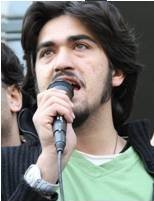 |
| Habib Farahzadi, Tehran University Student’s Day, Dec. 6, 2008 |
10. On Student Day in 2008, the Islamic Society of Democracy-Seeking Students was able to organize a very energetic gathering at Tehran University with the help of the Daftar-e Tahkim-e Vahdat. It was a gathering with 5000-6000 people that made a lot of noise at the time. I was the speaker at this event at Tehran University. As a consequence of my speech I was suspended for two terms, one of which was put into effect and the other of which was put on hold.
11. Another action we organized at the university before the elections was to plant trees in universities nation-wide in honor of imprisoned students. Another issue was the burial of martyrs[4] at the university. We had previous experience in this regard at Sharif, Allameh and Polytechnic universities where student protesters were beaten. Therefore we decided to confront this in a very civilized manner. This was before the elections but our emblem was colored green. We wrote a series of letters, penned by myself, titled “A Letter to My Martyred Brother” and published 7,000 copies.[5] We framed all our criticisms of the government in heartfelt discussions [with the martyrs]. We distributed these letters on the day of the burial of the martyrs when lots of families of martyrs and Hezbollahis [Militia forces] had come to the university. On that day, I myself went to the university wearing a suit and tie. I held the letters by hand, stood in the front row to greet the martyrs and distributed the letters. Saeed Haddadian [a Muslim public speaker] was standing just two people away from me and wanted to rip my head off but he could not do anything there.
Free Academy Manifesto
12. Later on we were engulfed in the [2009 presidential] election atmosphere. Before that we had a plan titled “Free Academy Manifesto” which we wanted to implement through the Islamic Society of Democracy-Seeking Students in the universities. We wanted to spell out the rights of students and academics in that manifesto and to have a comparison study of student movements in other countries, including the United States, France and South Korea. We tried to put this manifesto together but then the elections transpired. So we took this manifesto to the presidential candidates and sought their reaction to the central demands of the Daftar-e Tahkim-e Vahdat to ensure the rights of universities.[6] At the time Mr. Karoubi accepted the manifesto without preconditions and Mr. Mousavi rejected it while other candidates said nothing. That is why the Daftar-e Tahkim-e Vahdat officially and explicitly supported Mr. Karroubi at that time.[7]
13. As we entered the elections I became active in various task forces. We set up a task force at the Vali Asr Crossing and handed it over to the Daftar-e Tahkim-e Vahdat and that became their task force. Then we set up the Shahrvand Emrooz office in Farmaniyeh and it became the command center to coordinate the activities of our task forces. Then we set up the Government task force and finally I was stationed at the Mahmoudiyeh task force. We were active in this task force until election time. And then during the elections those incidents with the fraud took place.[8]
14. In June 14, 2009 I was going around town with one of my friends to check out the city’s mood until we reached Amirabad St and Kouye Daneshgah university dormitory. We saw a bus there parked in a strange position in the middle of the street. It looked more like a bunker and the students had poured outside. At that point I separated from my friend and entered the dormitory. Since I was well known at Tehran University I was able to organize the dispersed crowd to some extent. For two nights (from June 14-15 in 2009), we were able to hold on to the dorms. We closed off Amirabad St and connected the girls’ and boys’ dormitories from the street and resisted against the Ansar and Special Units in every way possible. That is, we resisted with rocks, fires and earth barricades. The residents of Amirabad also helped us a lot. Eventually on the night of the 24th (of June), in the middle of the night at 3 a.m., the Ansar, Special Units and thugs and bullies entered the dormitories, beating, injuring and killing people. It was very vicious. In those few hours, their presence in the dormitories was really a nightmare. Finally they filled up two buses [with students] and took them to the police station located in Shapour St. They also took two buses full of people to the Interior Ministry and kept them in the 4th underground level. They were mistreated a lot over there.
15. That night I was able to escape and I was in hiding for three or four months. Then the university’s disciplinary committee suspended me for three additional terms, two of which were enforced and the third of which was kept on hold. In other words, I was suspended for a total of five terms, three of which were put into effect and two were on hold. This was an illegal action because the university cannot suspend anyone from studying for more than two semesters.[9]
Arrest
16. When Khamenei made a speech and said the case regarding the university dormitory incident should be closed, I went to the university in October 2, 2010 to enroll for the new term. I only had two terms left in my studies. Ahmad Ahmadian was a member of our organization and a close friend of mine. He was by my side in all the activities at the Islamic Society of Democracy-Seeking Students. Ahmad Ahmadian is the brother of Amin Ahmadian, the husband of Bahareh Hedayat.[10] At that time I had been summoned through the phone. The day I went to the university Ahmad came and told me that Amin Ahmadian’s interrogator had told him we have to turn ourselves in or else he would issue arrest warrants. Ahmad said, “Let’s escape together again.” (Last time we had escaped together as well). I said I want to finish my studies and I don’t want to be hanging in the air. Ahmad’s situation was different than mine. I didn’t have much left in my studies but he had not even started. Ahmad escaped again and I was arrested on that day in front of the university gate.[11]
17. A huge agent in civilian clothes came towards me right in view of the university security and said, “Mr. Mohammadi?” I said, “No!” He said, “Come inside the car. I have something to tell you.” I sat inside the Peugeot 405. The passengers were all agents in civilian clothes and staff from Evin Prison. My interrogator was sitting next to me. The car had a normal license plate [not a government one]. He handcuffed and blindfolded me but before closing my eyes he took out a pen and piece of paper (it was my study unit selection form) from his bag and said, “Write down your email.” I wrote a fake email and password. From there I was taken to Evin Prison’s Ward 2Alef[12], which is run by the Revolutionary Guards.
Military Court
18. The morning after they took me to the military court on Shariati St., north of Moalem St., and a military interrogator read my charges to me. The reason why my case had been referred to the military court was because the [university dormitory] case had been opened on Khamenei’s personal order and Sadegh Larijani, the head of the Judiciary, had issued a special decree to the military court to investigate this case outside the civil and revolutionary courts. My interrogator was Mr. Gholam-Abbas Torki, the special military interrogator, and my judge was Mr. Forati, who was a cleric.
19. My charges, which included disturbing the public order, disobeying the national police’s order, and damaging public property were read out to me by Mr. Torki. But I must say that formalities in the military court were much better than the revolutionary court. They at least adhered to prosecutorial procedures. In particular this was true of Mr. Torki, and even though in the end he issued an order for my arrest and I was imprisoned and tortured, he himself dealt with me appropriately. The military court has two sections, 1 and 2, each of which are in charge of deciding certain military crimes. Their appellate court also has sections 1 and 2. Torki was my special interrogator and naturally at that stage I was not taken to any of those sections.
Evin Prison Ward 2Alef
20. Later I was returned to Evin Prison and my interrogations began in Ward 2Alef. I was in Ward 2Alef for 31 days, three weeks of which was in solitary and the last ten days of which I was with another friend who I will talk about when appropriate.
21. In these 31 days I was interrogated maybe more than 40 times. I was interrogated once or twice a day, each time lasting about 3-4 hours. It did not make a difference when the interrogation took place, early morning or mid-night, they showed up for interrogation at any time. Each time there was one interrogator and only when there were beatings, would someone come to help. I saw the face of my interrogator and I know his real name, too. His real name is Ali Hematian. He has a brother by the name of Mohammad Hematian who has been missing in action since the war (with Iraq). Ali Hematian was married and had a three-year-old daughter. He was a bit shorter than I, with long hair that he combed from the side. He had a trimmed beard. His shirt hung over his trousers and the sleeves were folded. He was very neat and organized. He claimed he had studied social science at Allameh University but that was a lie. It was obvious he was illiterate.
22. He introduced himself to me as Nasser. But during interrogations he did something very unprofessional by talking to his wife on the phone. I could hear her voice on the other end of the phone. So when she called him “Ali” I could clearly hear it. That’s how I found out his first name. I had another friend who was also an activist at Tehran University Law School. He had been arrested before I was, and told me that this man was his interrogator. In other words, I found out we had the same interrogator based on the things he had told each of us.
23. I had a strategy for going through the interrogation process. I decided to remain silent for a week and not give information and tolerate the pressure and see what happens. I wanted to test them and to see how much I could resist. For a week I responded to every question from the interrogator but when he told me to write it down, I wouldn’t write. Even when he would ask me, for instance, to introduce my family and write my biography, I wouldn’t write. I was severely beaten during that week. I was beaten so badly that the following week I had difficulty sleeping and going to the toilet. Luckily when I started writing they thought I had broken down and assumed whatever I was writing was definitely true. I wrote down ten percent of the truth and they accepted all of it completely without putting too much pressure.
24. All the interrogations were in Ward 2Alef. I can show you the location on Google Earth. There were two buildings and in one of them there were prison cells called “Hafez” and “Vaez”. Above it was the women’s section and then you would enter the open-air area and further on they would take you to another building that was the building for interrogations and torture. They did not treat me very badly. It was just ordinary beating. Our case was the university dormitory case, which was very sensitive and featured in the news and therefore they [were careful] to not treat us too badly.
25. After 21 days in solitary confinement, they took me from my cell to another cell that was a bit larger but did not have the same facilities as the previous cell. I mean, there was a wash bin in my previous cell but not in this one. I had been transferred from the Hafez cell to the Vaez cell.
26. The day after, when I got back from interrogation, I saw there was another person in the room. We started talking and I found out he was Foad Sojoudi, one of the guys from Polytechnic. He was also a brilliant student and had three registered inventions. He was a PhD student in medical engineering at Polytechnic. He was not a political person and had no past activities. He was not accused of blasphemy or anything like that. He was under a lot of pressure. He was the son of a martyr and was not familiar with these things at all and officials took advantage of this and tested his tolerance. In the end he was sentenced to eight years and released on 500 million tomans bail [approximately US $500,000 in 2010].
27. After that they transferred Foad and I to be with another person named Mahmoud Mohammadi. Mahmoud Mohammadi was a drug trafficker and he didn’t belong in Ward 2Alef at all. They had caught him with a lot of drugs and possibly, according to the interrogator, with a Colt handgun in Qazvin. He did not have a previous record and had not accepted the accusations against him. He was in solitary confinement for six months and he had been in this cell for three months. He had been in prison for a total of nine months. He said, “They keep torturing me and asking me to say I have connections with the CIA, the Taliban or Mossad.” They only wanted to get something from him to be able to execute him. My interrogator explicitly told me, “We will execute him.” I never told him this because it was not something you could say to him.
28. After that I was freed from Ward 2Alef on 50 million tomans bail [approximately US $50,000 in 2010] until my trial date. I returned to the university and I was able to claim my credits and complete all courses successfully.
29. In March of 2011 the Tuesday Protests[13] had taken shape in Iran. In short, I was returning home from university on one of these Tuesdays when I noticed a demonstration, and the Special Unit of NAJA [national police] arrested me again. I was arrested as part of a sweeping arrest and they did not know who I was. First we were transferred to the traffic police parking lot on the corner of Roudaki on Azadi Ave. We were beaten up a little over there and then they transferred us to the security police station on Shariati Ave. We were at the security police station for a week and again I was released with 20 million tomans bail [approximately US $20,000 in 2011]. This case is with Judge Moqiseh at the 26th branch of the revolutionary court and is still pending. I did not attend any of these trial sessions.
30. Then the ruling from the first trial, that is the one before the military court, was handed down and I was sentenced to ten months in prison and 74 lashes. Then, without me filing an objection, the judge himself changed the sentence to five months’ imprisonment, a four years’ suspended prison sentence and a 500,000 tomans fine [approximately US $250 in 2012] instead of lashes. But with my second arrest the suspended sentence had been changed to an actual prison term. I paid the fine at that time.
31. [Given the prison sentence I decided to leave Iran]. Since I did not have a passport, I was smuggled across the border into Turkey on April 10, 2012.
[1] Daftar-e Tahkim-e Vahdat [Office for Strengthening Unity] is a student organization in Iran that was formed in 1980 and formally established in 1982. The organization led the student movement in Iran in the 1980s. In 2002, the organization was divided into two branches, the Shiraz branch (minority branch), and the Allameh branch.
[2] The head of the Academic Faction in Iran’s Parliament quoted Science Ministry authorities and said that the Allameh branch of Daftar-e Tahkim-e Vahdat was declared an illegal group in 2004. See “Allameh branch was also announced as an illegal group in the previous government.” Iran News Network (INN). Feb. 22, 2009, available at: http://inn.ir/NSite/FullStory/News/?Serv=0&Id=14940&Rate=0 also see “Press release of public affairs of the science ministry regarding the illegal branch of Daftar-e Tahkim-e Vahdat” official website of the Science Ministry, Jan. 4, 2009, available at: http://www.msrt.ir/sites/ravabetomomi/msrtnews/Lists/jsj/DispForm.aspx?ID=1551
[3] This is a reference to the Iran-Iraq war that lasted from 1980 to 1988.
[4] Based on Islamic norms, people who are killed in the name of Islam or on behalf of an Islamic government are considered to be martyrs.
[5] “Letter of the Islamic Society of Democracy-Seeking Students in Tehran university to the unknown martyrs”, ETTELAAT website, available at: http://ettelaat.net/09-januari/news.asp?id=34601
[6] Bayanieh Daftar-i Tahkim-i Vahdat dar Tashrih-i Motalebat-i Daneshjouyan az Kandidahay-i Riasat Jomhouri [Statement of Office for Strengthening Unity regarding demands of students of candidates in the presidential election], ADVAR-NEWS, May 1, 2009, available at: http://advar-news.biz/article7542.html
[7] Hemayat-i Advar-i Tahkim-i Vahdat az Karroubi [Office for Strengthening Unity’s support Mehdi Karroubi], ETEMAD MELLI Newspaper, No. 921, May 17, 2009, available at: http://www.magiran.com/npview.asp?ID=1860922
[8] See, Iranian presidential election, 2009, http://en.wikipedia.org/wiki/Iranian_presidential_election,_2009
[9] According to the student disciplinary regulations, the “university disciplinary committee” can suspend a student at most for two semesters, and the “central disciplinary committee” can suspend a student for at most four semesters. See: http://farhangi.behdasht.gov.ir/index.aspx?siteid=94&pageid=24154
[10] Bahareh Hedayat is a prominent student activist who was arrested following the disputed June 2009 presidential election in Iran. At the time of the publication of this statement, she is currently serving a nine and a half year prison sentence in Evin prison on charges of acting against national security, giving interviews to foreign media, insulting the leadership and the president, and disturbing the public order.
[11] Habib Farahzadi, Fa’al-i Daneshjouy-i Daneshgah-i Tehran Tavasot-i Mamouran-i Lebas Shakhsi Roboudeh Shod. [Habib Farahzadi, a Student Activist in Tehran University was kidnapped by Plainclothes Agents.], JARAS, October 2, 2010, available at: http://www.rahesabz.net/story/24603/
[12] Political prisoners are held in this ward.
[13] Following the continuing house arrest of Mir Hossein Mousavi following the disputed June 2009 presidential elections in Iran, the “Tuesday Protests” were organized via a Facebook page invitation of the same name. The invitation called on demonstrators to protest each Tuesday, starting from the Tuesday evening before Wednesday, March 2, 2011, the birthday of Mir Hossein Mousavi. See: “Tuesday Protest plan following continuing house arrest of the green movement leaders”, JARAS, February 25, 2011, available at: http://www.rahesabz.net/story/33253/

